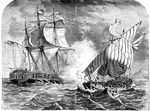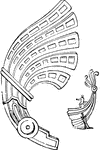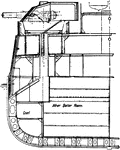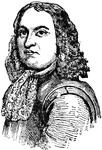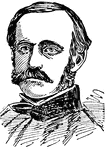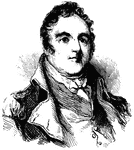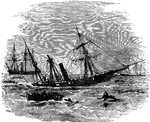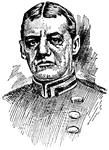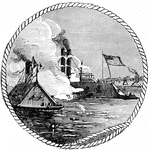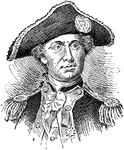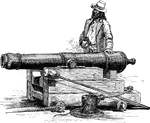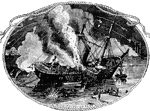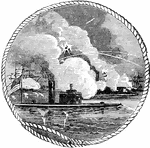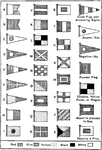
Anchor
The anchor used by the ancients was for the most part made of iron and its form... resembled that of…

Armada
An illustration of the Spanish Armada. In etymological origin, armada is a Spanish word meaning "armed"…

Battleship Massachusetts
Ships designed to engage similar enemy warships with direct or indirect fire from an arsenal of main…

Caio Duilio Battleship Italian Navy
Italian navy's Caio Duilio battleship launched in 1913. The ship was used during World War I and II.

Bretagne Class Battleship French Navy
The Bretagne class battleship built by the French navy during 1913. The ship has a top speed 20 knots…

Hindenburg German Navy Battleship
German Navy Battlecruiser, SMS Hindenburg. The ship was launched in 1915, and used during World War…

Russian Navy Battleship
"Four battle cruisers were launched in 1915, but they had not been completed up to 1921. On a displacement…

United States Navy Arizona Battleship
An illustration showing USS Arizona. USS Arizona was a Pennsylvania class battleship, built by U.S.…

Massachusetts Battleship United States Navy
USS Massachusetts commissioned by United States Navy in 1942. The ship was used during the World War…
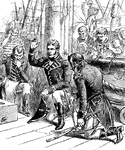
Before Battle Prayer
The crew of a naval ship in the Revolutionary War praying before they head in to battle.
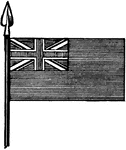
Blue Ensign
The Blue Ensign is a flag of Great Britain. It is the distinctive ensign of the royal naval reserve.
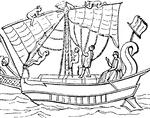
Greek Boat
"The masts were usually taken down when the vessel arrived in port, and raised again when it was about…

Brig
"Brigantine: a square-rigged vessel with two masts and fore and aft mainsail." — Williams, 1889

The Consititution Capturing the Cyane and Levant
The Constitution engaging two British ships, the Cyane and Levant.

James Fenimore Cooper
"The celebrated novelist, James Fenimore Cooper, was born at Burlington, New Jersey, September 15, 1789.…
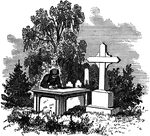
Richard Dale's Monument
The monument of Richard Dale (1756-1826), a naval officer born in Norfolk County, VA.

Admiral David Farragut
Admiral Farragut entering Mobile Bay atop the rigging of his ship during the Civil War.

Admiral David G. Farragut
"Admiral Farragut, born at Campbell's Station, near Knoxville, Tenn., July 5th, 1801, died in Portsmouth,…

David Glasgow Farragut
David Glasgow Farragut (July 5, 1801 – August 14, 1870) was a flag officer of the United States…

Passage of Forts Jackson and St. Phillip
Depiction of the battle on the Mississippi between Confederate and Union forces at Forts Jackson and…

Roman galley
"Elated by the victory, the Romans now determined to drive Carthage out of the island altogether. This,…

Philip Hichborn
Philip Hichborn was a naval constructor burn on Charlestown, Mass. on March 4, 1839. He died May 1,…
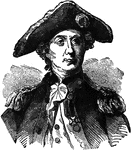
John Paul Jones
John Paul Jones (July 6, 1747 – July 18, 1792) was America's first well-known naval fighter in…

Kearsarge Sinking the Alabama
The sinking of the Alabama by the Union Kearsarge. Some Confederates aboard the Alabama escaped to England…
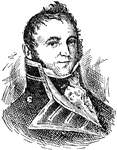
James Lawrence
(1781-1813) American naval officer who fought in the War of 1812, commanded the Peacock and the Chesapeake.…
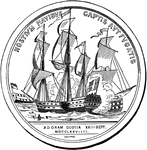
Gold Medal Awarded to John Paul Jones (Back)
The Congressional Gold Medal awarded to John Paul Jones, America's first well-known naval fighter in…
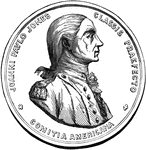
Medal Awarded to John Paul Jones (Front)
The Congressional Gold Medal awarded to John Paul Jones, America's first well-known naval fighter in…
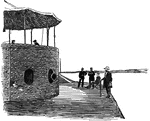
Monitor
Navy soldiers on the deck of the Monitor, a warship famous for the battle with the Merrimac.

Samuel Pepys
Samuel Pepys, FRS (23 February 1633 – 26 May 1703) was an English naval administrator and Member…
